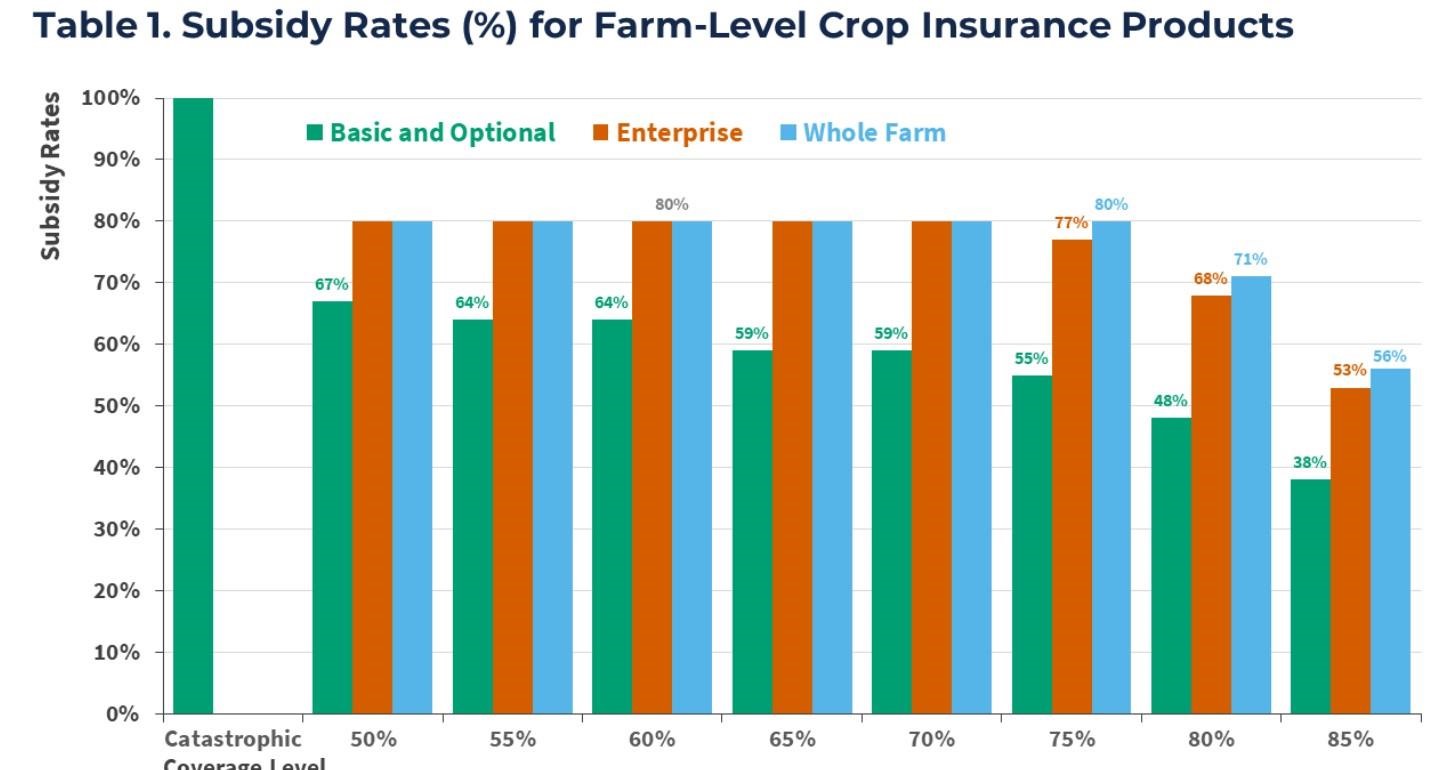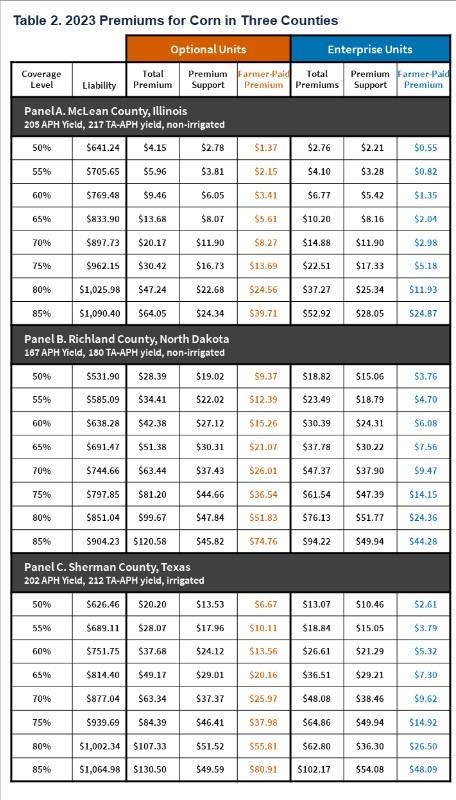By Adam Russell
Late-season sorghum has been a consideration for Texas growers stymied by drought so far, but the risks appear higher than the reward, especially in South Texas, according to a Texas A&M AgriLife Extension Service report.

Getting late-planted sorghum to harvest could be an uphill battle for Texas producers, especially with nature, the grain market and break-even budget costs aligning against profit potential. (Texas A&M AgriLife photo Laura McKenzie)
Calvin Trostle, Ph.D., AgriLife Extension agronomist, Lubbock, and AgriLife Extension agents Vidal Saenz, Hidalgo County, and Jaime Lopez, Nueces County, contributed to a report focused on late-planted sorghum as an option to follow failed crop plantings. Trostle said grain producers are looking for an option they can possibly grow to harvest before the first frost and still take advantage of historically high grain prices.
“Drought has depressed interest, even on irrigated acres,” Trostle said. “On dryland, planting is a moot point unless we receive significant rain, and there are no assurances for that. There are also the input costs to contend with, and I think growers with irrigation are going to sit it out.”
Few assurances for late-planted sorghum
Trostle said there is no good information to provide growing recommendations for much of the state.
Texas A&M AgriLife does not have data regarding the crop potential for mid- to late-summer planted sorghum for fall production in the Coastal Bend and South Texas. This is because, historically, late plantings of sorghum have never been the practice in those regions.
However, there is still time for historic planting dates in the High Plains, Trostle said. Shorter-maturity hybrids can be planted in the Lubbock region until July 10 and July 15 to the south. But yields for late-planted hybrids is typically 15%-20% lower than medium and early hybrids.
Crop insurance is also not available for sorghum planted this late, Trostle said.
To make matters worse, grain markets, including corn, sorghum and wheat, experienced major price dips on July 5, Trostle noted. December 2022 corn futures were down about 20% since late June.
Other grains like sorghum and wheat often track similar to corn prices. The price reductions will likely be another influence on producers already facing high input costs and risks of planting in such droughty conditions, Trostle said.
“Much of the High Plains did get 3-6 inches of rainfall from May to June, and that helped make things possible,” he said. “But we are going on a month without rain. Late dryland plantings are unlikely, and even producers with irrigated fields are weighing the risks versus the crop potential.”
Hoping for better luck next time
Saenz and Lopez said dry conditions are not the only thing sorghum growers would be up against in Central and South Texas. They also reported a litany of potential issues that could impact late-planted crops beyond moderate to exceptional drought in the regions as shown, on the U.S. Drought Monitor map for Texas.
Saenz and Lopez said damage to sorghum grain heads by birds, the high potential for sugarcane aphid infestations, and potential for tropical storm damages make late-planted sorghum risky. There is also the fact that the crop would sap moisture and nutrients from the soil needed for next year’s crops.
Some growers in the Rio Grande Valley do plant late corn between mid-July and Aug. 1 because corn handles cooler temperatures in November. But there is always the danger of an early freeze arriving in November for either crop.
Trostle’s 2022 Alternative Crop Options after Failed Cotton and Late-Season Crop Planting for the Texas South Plains provides some guidance for producers hoping to make a crop in his region.
“Producers may be looking for a crop to plant, but the cost of diesel and nitrogen fertilizer and with a lot of popular herbicides and insecticides having limited to no availability, it makes any decision tough,” he said. “I think a lot of growers are just going to wait and hope that input costs go down and growing conditions improve for 2023.”
AgriLife Extension district reporters compiled the following summaries:

CENTRAL
A general rainfall covered the area and was the first significant moisture in three weeks. Temperatures were 100-plus degrees 21 days in June. The rainfall was too late for corn as most fields were drying down. Corn harvest was getting underway, but field checks revealed insufficient kernel development and fill, suggesting some decreased yield potential. The second cutting of hay was lower than expected. Hay costs were creeping up, and some producers were culling livestock. Overall pasture and rangeland conditions were poor. Sale barns reported a higher volume of cattle sales. Stock tanks were drawing down. A large infestation of blister beetles was reported.
ROLLING PLAINS
Many areas received good rainfall with reports of a few tenths of an inch up to 2 inches, but most areas remained extremely dry. Moisture conditions continued to decline under high temperatures. Some corn fields were stunted by dry conditions and were not going to produce. Farmers were salvaging fields as silage. Sorghum fields were in similar condition and may be cut for salvage as well. Cotton was starting well with fair to good emergence. High winds and temperatures were taking a toll on some cotton fields. Irrigated cotton was in decent condition. A cutting of Sudan grass and Bermuda grass occurred with no expectations for another cutting due to drought. Pasture conditions were adequate with past rain providing moisture for grasses to begin to come back at a slow rate. Cattle were being fed supplemental nutrition but were still in good condition.
COASTAL BEND
Scattered rains were received, mostly in the northern parts of the district. Drought conditions persisted, and the rains had minimal impact on moisture levels and crop potential. Corn and grain sorghum were nearing maturity with some fields being harvested. Yields were well below average as predicted, with the exception of early planted sorghum that showed better-than-expected yields. There was some concern about cotton and a high number of hard-locked bolls due to lack of moisture. Rangeland and pastures were greening some in areas that received rain, but very little growth was expected without additional rainfall. Some areas may get a hay cutting soon. Livestock producers were supplementing cattle diets with hay. Hay supplies were tightening after starting the year with abundant hay stocks. Producers continued to make tough management decisions, selling calves early and culling older cows to conserve available grazing. Livestock were in good condition.
EAST
Drought conditions persisted. A lack of rainfall has put hay production at a standstill. Pasture and rangeland conditions were poor to fair. Subsoil and topsoil conditions were very short to short. Current hay production amounts were well below average, and yields had many producers very concerned. Livestock were doing fair to good with some supplementation taking place. Low amounts of hay, high feed prices and possible water supply shortages were pushing producers to implement culling strategies.
SOUTH PLAINS
Extreme dry conditions continued. Rainfall was needed for all aspects of agriculture. Cotton was in very poor condition. Approximately 90% of dryland cotton was not going to make due to the lack of rainfall. Farmers were also reporting around 50% of irrigated fields were not going to make a viable crop. Corn, peanuts and sorghum were in fair condition. Winter wheat, pastures and rangelands were in poor to very poor condition. Cattle producers continued to make tough culling decisions, and herds remained on supplemental feed.
PANHANDLE
Soil moisture levels were short. Wheat harvest was winding down, and little wheat was harvested this season due to drought-stricken crops. Cotton fields were all over the board with dryland cotton in poor to fair condition and irrigated cotton in good to excellent condition. Irrigation continued in full force. Producers needed rainfall especially on dryland acres if they expect to make a crop. Pastures were in poor to fair condition, and what moisture was received helped some areas tremendously. Livestock were also in fair condition. A shortage of hay was expected in the upcoming fall and winter months.
NORTH
Soil moisture ranged from very short to short. High temperatures moved conditions in the wrong direction. Hay fields needed rain. Producers reported a 50% hay yield from the first cutting, but zero rain since had not allowed fertilizer applications or provided growth. Good to excellent quality hay bales were at or above $100 each. Soybeans were doing well. Corn looked nice. Sunflowers and cotton were doing well. Cattle were in good condition, and spring born calves were doing well. Parasite and fly loads were decreasing. Goat kidding was going well.
FAR WEST
Conditions were hot, dry and windy. Daytime temperatures were in the upper 90s with nighttime temperatures in the mid-70s. A couple of light showers moved across the district, dropping trace amounts up to 2 inches in the higher mountain areas. Area producers were hopeful the rainfall was the start of a productive summer monsoon season. Flood irrigation continued on all crops, including cotton, pecans, alfalfa and Sudan grass. Alfalfa looked decent in most areas with some weed issues because of rains. Cotton looked good as well, with some pigweed issues. Pigweed in the area had developed a tolerance to glyphosate. Producers began plowing failed cotton acres, including all dryland and approximately 20% of irrigated acres that emerged. The cotton crop was a couple of weeks behind overall. The corn crop was in poor shape with poor pollination. Coyanosa farmers started picking onions, and cantaloupes and watermelons were ready to be sold. Pastures were completely bare of any vegetation. Producers continued to cull cattle due to high hay and feed prices. All lambs and kid goats were worked and shipped.
WEST CENTRAL
Conditions were mostly hot and dry with some isolated rain showers and cooler temperatures early in the week. Wheat produced well below average yields. Cotton fields needed rain. Rangeland conditions were poor. Supplemental feeding of cattle continued. Cattle were still being culled and sold as tank water declined.
SOUTHWEST
Some much-needed rain came though the district. Some places received 2-4 inches of rain. Rains improved crop conditions, but more rain was needed. Corn and sorghum harvests started. Cattle prices were steady, and sheep and goat prices were low. Producers were still culling herds and pulling calves much earlier. Rivers, creeks and ponds continued to be dry. Wells were starting to go dry, and ranchers were hauling water. Pastures continued to suffer, and supplemental feeding continued throughout areas. Rangelands were in very dry condition.
SOUTH
Northern and western areas were very short on moisture while eastern and southern areas were very short to short. Temperatures remained hot, but some areas received scattered rainfall with amounts ranging from traces to 1.5 inches in several areas and up to 5 inches in isolated areas. Peanut planting was complete. Growers were considering late-planted sesame, but dry conditions discouraged planting. Sunflower harvest was complete, and sesame harvest will begin soon. Citrus and sugarcane crops were being irrigated. Vegetable production slowed due to the extreme heat. Corn fields continued to dent and mature with harvest around the corner. Farmers were test cutting sorghum. There were reports of heavy sugarcane aphid infestations. Harvest should not take long for corn and sorghum due to limited acreage. Cotton was blooming, but dryland fields were stressed. Pasture and rangeland conditions were very poor to good, and fields with irrigation were good to excellent. Hay fields continued to be cut and baled. Producers estimated near-total losses for most small grain grazing crops. Livestock producers were still providing heavy amounts of supplemental feed and culling herds. Supplemental feeding reduced in some areas. Stock tanks were extremely low in some areas and in good shape in others. Hay and feed prices continued to rise. Sale volumes were average, and prices were steady at local markets.
Source : tamu.edu